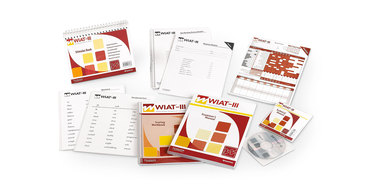The Wechsler Individual Achievement Test - Third UK Edition (WIAT-IIl UK) provides a reliable assessment of reading, language and numerical attainment in one test. Guidance on using this test in your telepractice
Wechsler Individual Achievement Test - Third UK Edition
WIAT-III UK
The Wechsler Individual Achievement Test - Third UK Edition (WIAT-IIl UK) provides a reliable assessment of reading, language and numerical attainment in one test. Guidance on using this test in your telepractice‹ View all tests and materials
WIAT-III UK Stimulus Book (Print)
9780749171940
Qualification Level
B
£400.10